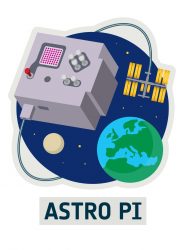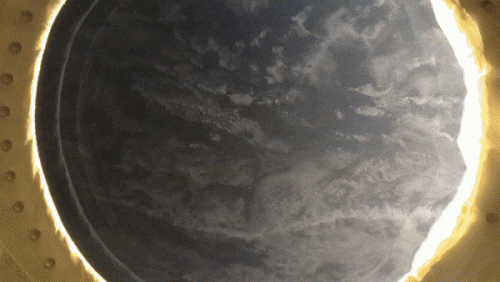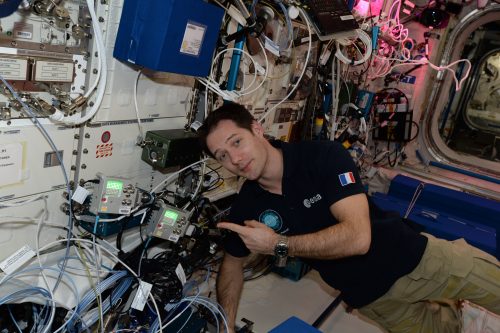Our team here at the Raspberry Pi Foundation, in collaboration with ESA Education, is excited to announce the successful deployment of young people’s programs aboard the International Space Station (ISS) for the European Astro Pi Challenge 2020/21!

Across both Astro Pi missions — Mission Zero and Mission Space Lab — 14,993 participants created an amazing 9408 programs, which have now run aboard the ISS’s two special Raspberry Pi computers: the Astro Pis Izzy and Ed. Congratulations to all for their achievements during this challenging year!
Mission Zero: Popular as ever
This year, 14,054 young people from 24 countries successfully took part in Mission Zero: the Astro Pi computers aboard the ISS ran their programs for 30 seconds each.
In Mission Zero, young people write programs to measure the humidity inside the ISS Columbus module using the Sense HAT add-on of the Astro Pi, and then use the Sense HAT’s LED matrix to display the measurement together with their very own message to the astronauts. This year that included ESA astronaut Thomas Pesquet, who oversaw the deployment of both the Mission Zero and Mission Space Lab programs.
To make it easier for young people to participate in Mission Zero while school closures and restrictions on face-to-face meetings were in place to help stop the spread of coronavirus, we updated the Mission Zero rules this year: for the first time, young people could take part by themselves as well as in teams. As we had hoped, this new option proved hugely popular, with 6308 entries coming from individual participants. Despite the challenging circumstances, this year’s number of Mission Zero participants was just 5% lower than last year’s — a sure sign of how much young people love Astro Pi!
Mission Space Lab: Investigating life in space and on Earth
In addition to the Mission Zero participants, 232 teams of in total 939 students and young people are currently in their final phase of Astro Pi Mission Space Lab. Over the last month, each team had the program for their scientific experiment run on either Astro Pi Ed or Astro Pi Izzy for three hours each.

Teams conducting ‘Life on Earth’ experiments used Astro Pi Izzy’s near-infrared camera to capture images of the planet’s surface. Their experiments include predicting weather patterns by analysing cloud formations, assessing the impact of climate change by investigating reductions in vegetation cover over time using NDVI, and studying variations in the Earth’s magnetic field.
Teams conducting ‘Life in space’ experiments used Astro Pi Ed’s sensors to investigate life inside the ISS Columbus module. Their experiments include measuring the direction and force of gravity inside the Space Station, analysing the air quality onboard, and calculating the position and direction of the Space Station in orbit.
All Mission Space Lab teams have now received their data back from the ISS so they can analyse it and summarise their findings in their final scientific reports. To grant teams enough time to complete their reports while social distancing measures may be in place, we have extended the submission deadline to 12 pm (noon) BST on Monday 28 June 2021!
It’s cosy inside the ISS!
Despite its relatively large size of 109 metres, the ISS only has enough sleeping pods for seven astronauts. However, sometimes there can be more than seven astronauts onboard: usually when one group prepares to leave as another arrives. Recently, a whole eleven astronauts were aboard the ISS, which meant that they had to get creative about where to settle down for sleep.
For Ed and Izzy, our Astro Pi computers, a large crowd such as this can cause some complications! For one thing, ‘crew bumping’ is more likely, which is when the USB cable connecting an Astro Pi to power can become accidentally unplugged because an astronaut collides with it in the small space of the Columbus module. And this time, the snug sleeping situation made one of the crew members request permission to cover Astro Pi Ed’s LED display during the ‘night’! Why? The astronaut was ‘bedding down’ directly opposite Ed, and the light from the display was making sleep difficult! That just goes to show that, even in space, it’s really best to avoid bright light if you need a good night’s sleep.

Who will win Mission Space Lab 2020/21?
We and our collaborators at ESA Education have appointed a jury of experts to judge all the Mission Space Lab Phase 4 final reports and select the 10 teams with the best reports as the winners of the 2020/21 round of Mission Space Lab. Each of the 10 winning teams will receive a special prize: an invitation to a webinar with an ESA astronaut where they can directly ask them their questions about life in space!
Congratulations again to all the teams that have taken part in the European Astro Pi Challenge this year. Mission Space Lab teams, we can’t wait to read your reports!
Website: LINK

